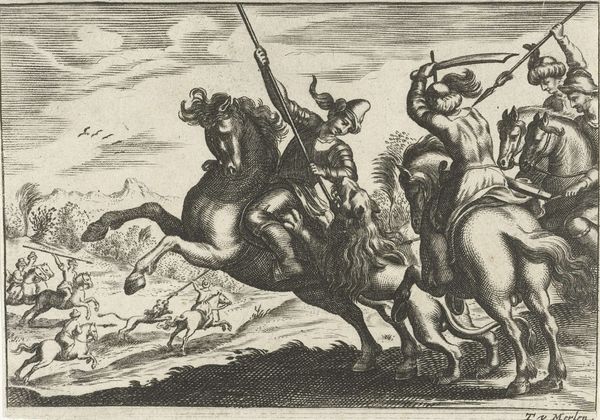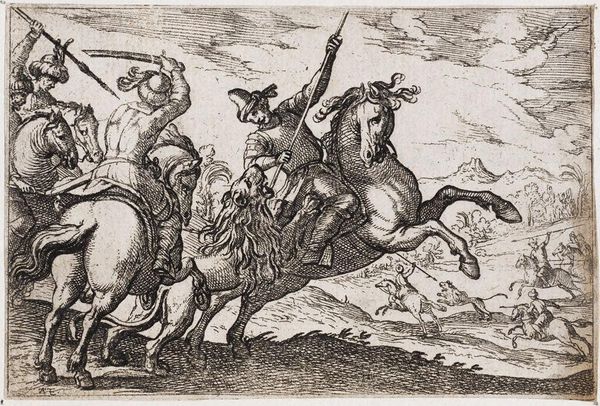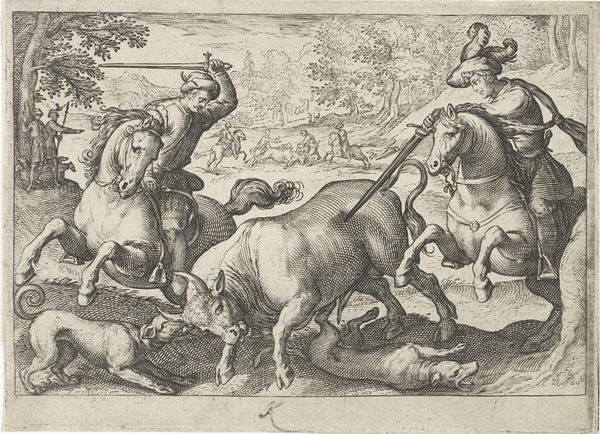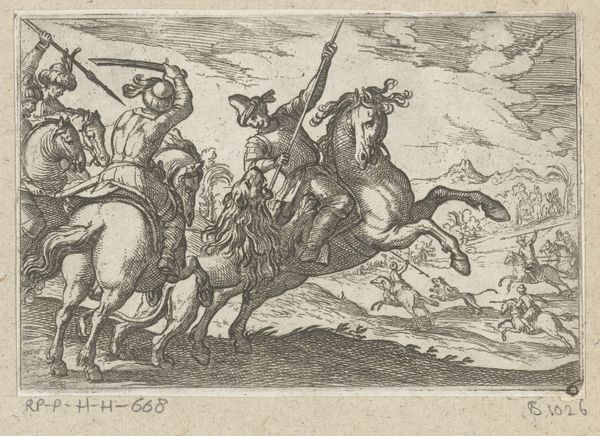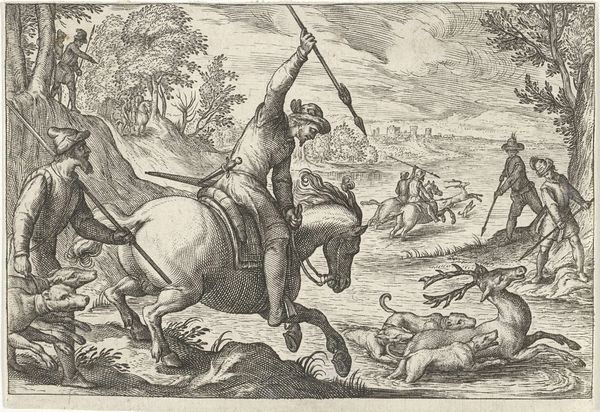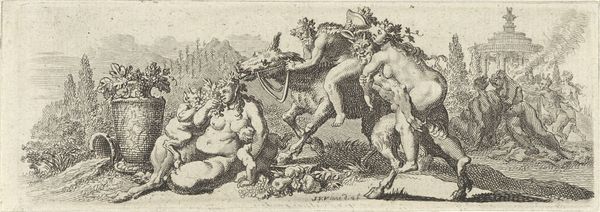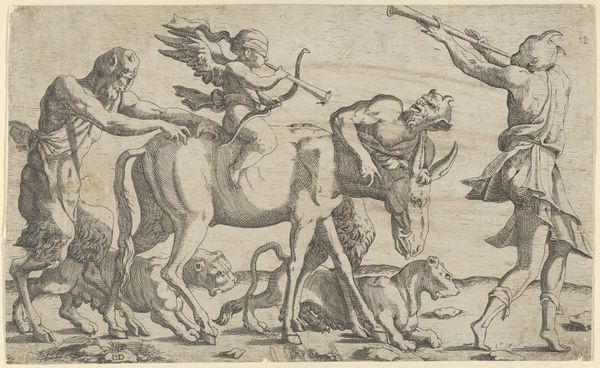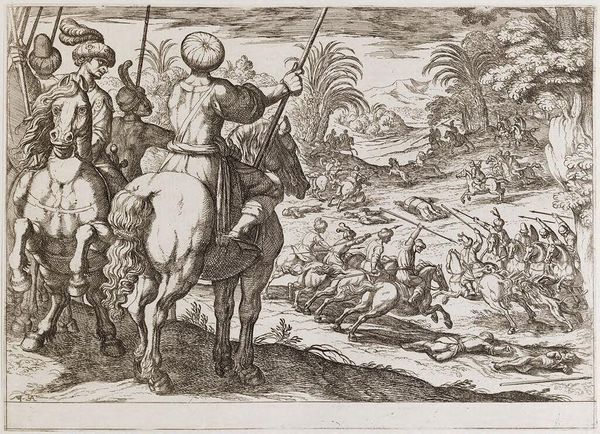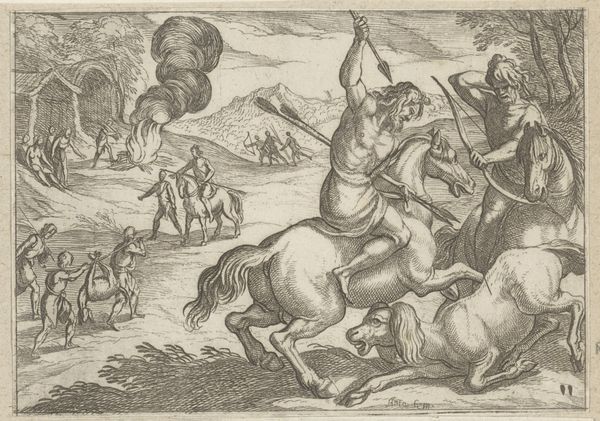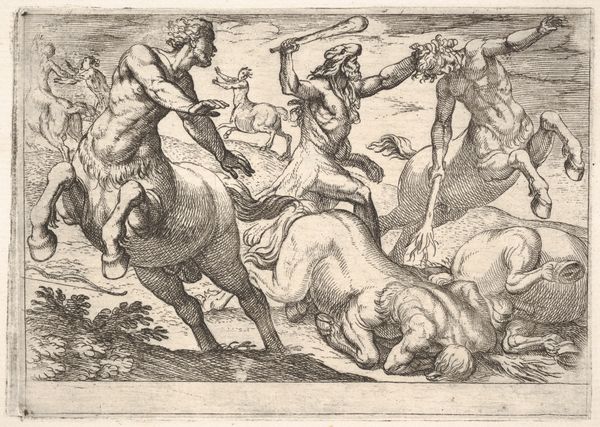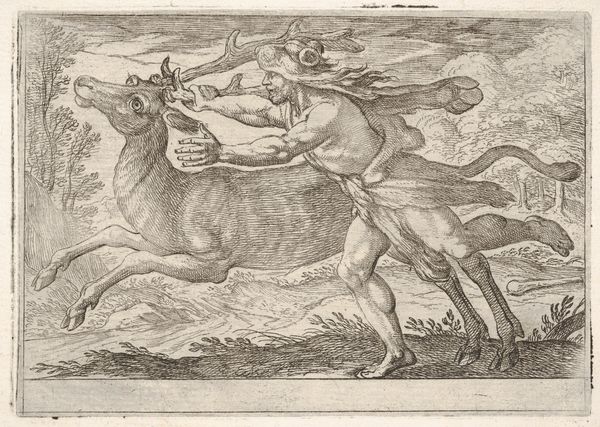
print, engraving
#
narrative-art
#
baroque
#
dutch-golden-age
# print
#
landscape
#
figuration
#
engraving
Dimensions: height 79 mm, width 119 mm
Copyright: Rijks Museum: Open Domain
Curator: This engraving, "Leeuwenjacht" or "Lion Hunt," was created by Egbert Jansz in 1598. The print plunges us into a chaotic scene. What's your initial reaction? Editor: My immediate thought is: texture! The density of the lines—the physicality of the mark-making—it really animates the entire composition. The crosshatching gives weight to the forms, makes you feel the landscape. Curator: Yes, notice how the Baroque style, then flourishing, uses figuration within the landscape to symbolize power. Hunting scenes are always layered with meaning, connecting man's dominance over nature with social standing. The lion, a creature of strength, embodies the ultimate prize and test. Editor: Interesting to think about the means of production too. As an engraving, we are not considering simply aesthetics or theme, but also how accessible it was through printmaking. It serves a different function as an artwork than say, a tapestry or fresco in a great house. It's replicable, able to communicate power far beyond the single scene. Curator: And don’t overlook how this image echoes cultural narratives, these hunts, which are often seen as a symbol of control and dominance. What this lion symbolizes in the cultural imagination…it echoes in countless tales across eras. It becomes something primal within our psyche. Editor: You are absolutely right. But what the work truly suggests to me is not simply 'dominance' as an abstract concept. It’s the *effort*, and the cost, needed to maintain these types of displays, these material demonstrations of superiority. Curator: It does make you wonder about the implied narratives outside of the frame of the print. Does that labor really solidify that "superiority"? Or does it suggest vulnerability and fragility, that human authority constantly needs reassertion? Editor: Absolutely, and by analyzing the materials, by really *seeing* the hand that made this and the process it underwent, we gain a much more textured understanding, ironically enough, of the culture that generated such images. Curator: And by looking at the symbols encoded within "Leeuwenjacht", we touch not just the surface, but something within our cultural DNA that still responds. Editor: Perhaps. Seeing it now, my appreciation lies in how something reproducible bears the touch of hands. A contradiction with potent effect.
Comments
No comments
Be the first to comment and join the conversation on the ultimate creative platform.
